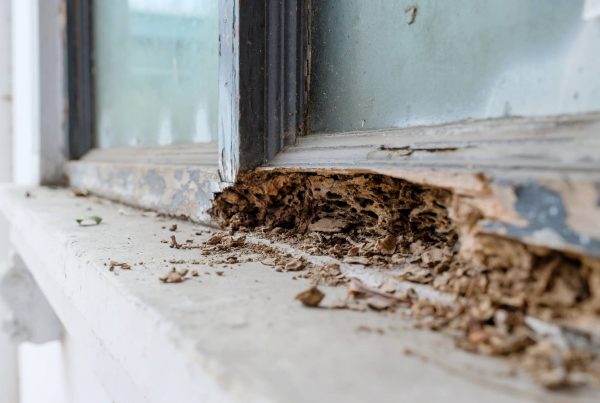
Most homeowners love landscaping so they can make the yard look nice and inviting. In some neighborhoods or towns, there are competitions to have the best landscaped yard.
Landscaping is not too difficult and often is adding plants, bushes, here in Florida many of us add palms, and even decorative stone to name a few. It is easy to make a yard look amazing.
However, did you know that landscaping also can keep water away from the house? Landscaping involves grading, gutters, native plants, and more! Let’s look at why this is important, the importance of grading, gutters downspouts, native plants, drainage, what can happen if not taken care of, and maintenance landscaping.
Why This is Important
Landscaping doesn’t only make a yard look nice, but also can help with keeping water away from the home. Making sure the water is not pooling and causing issues like flooding, mold, or structural issues is important.
Grading is Part of Landscaping to Keep Water Away From House
When you purchased the home if the yard had negative grading this would have come up in the home inspection. The yard should slope 6 inches for every 6 feet to ensure there is no negative grading. To fix this, add soil to the yard to allow the water to run away from the home.
Make sure the soil (and if you add mulch) only touch the foundation but is not touching the siding as you don’t want water leaking into the home.
Gutters
Gutters should be installed on your house to help carry the water away from the home. At least twice a year and maybe after big storms, cleaning out the gutters is essential. You want to make sure they don’t clog.
Getting on a ladder may be necessary to do this. If it is dangerous for you, contact a professional to do this for you. This involves cleaning out all the debris and leaves in the gutters and then running water through to make sure it flows through the downspout.
Is the water backing up in the gutters? Then there may be a clog. This will need to be fixed right away so it does not lead to more issues with water in the home.
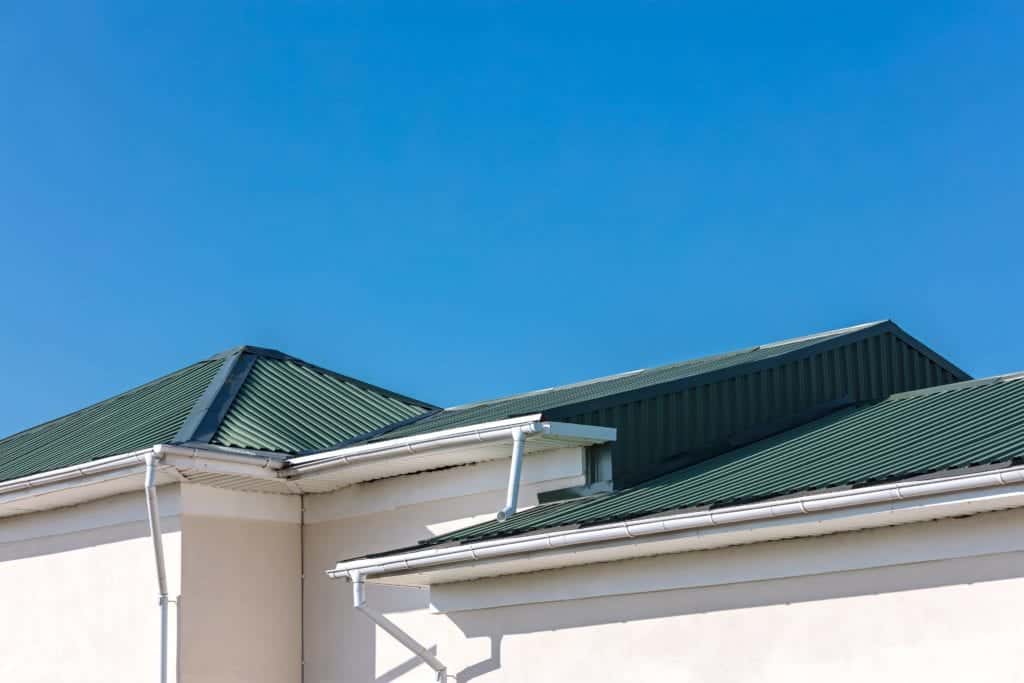
Downspouts
Adding downspouts on a home is essential to make sure the water and debris in a gutter are carried away from the home and doesn’t pool next to the house. A good way to make sure this does not happen is by putting a splash block under the downspout. This will divert the water away and help with possible erosion.
Downspout extensions or gutter extensions need to be added on as well. These extensions should go 4-6 feet away from the home but 10 feet if there is room. Their purpose is to carry the water as far away from the home as possible.
Native Plants Are Part of Landscaping to Keep Water Away From House
Choose plants that are able to grow where you live. The roots will allow the soil to hold in place and not wash away when it rains, thus helping with the grading of the land.
Drainage Systems You Can Add to the Yard
1. Swale
A swale is a depression that will take stormwater from one place to another and will filter runoff water by letting it sink into the soil. Some people landscape with river rock or use ferns or grasses.
2. Rain Garden
A rain garden is a nice addition to the landscaping and very useful. It can slow down runoff and collect, as well as filter, water to the ground. This garden consists of mulch and layers of soil and plants that like wet environments. Make sure that it is at least 10 feet from the house as you don’t want to add issues of drainage back to the yard.
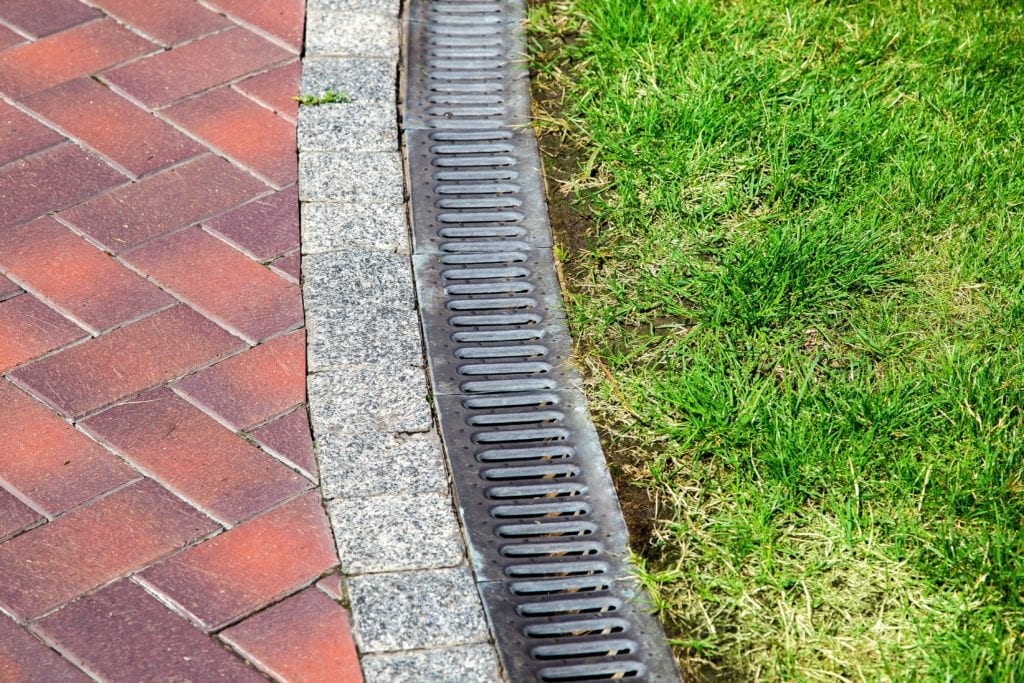
3. Pavers Are a Great Landscaping Idea to Keep Water Away From House
Pavers in driveways have small gaps and allow the water to drain into the soil. This keeps the water from backing up and forming pools of water- that is not what we want. In addition, they are available in various types and designs and a professional can help you figure out what will work best.
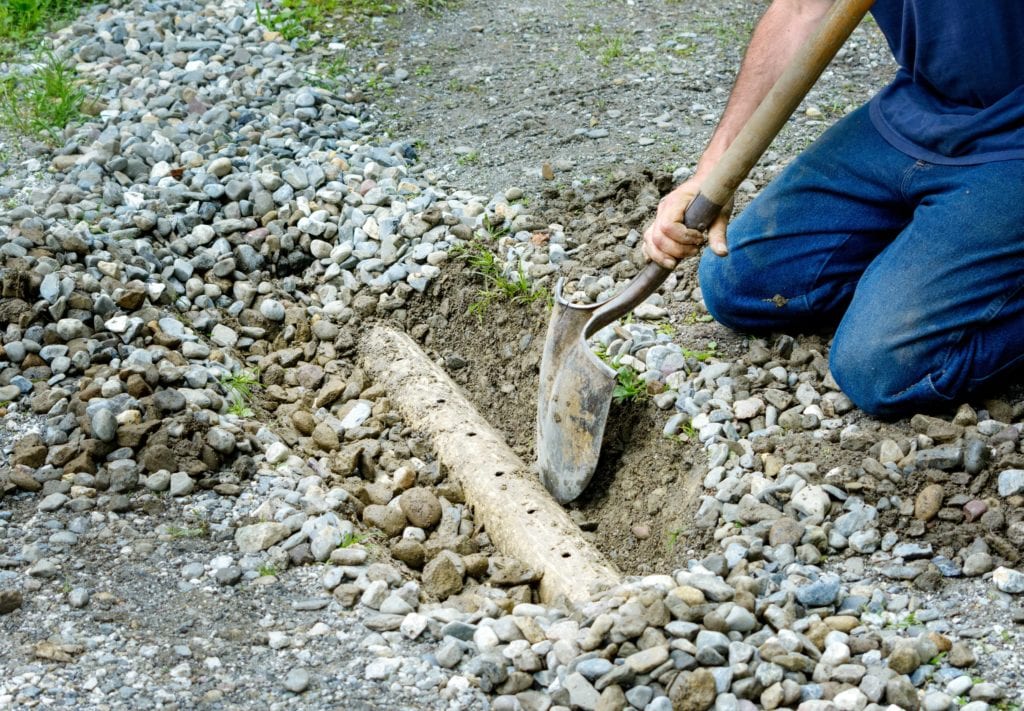
4. French Drain
This is a drain that you or a professional can build. Keep in mind, it does involve tearing up the yard. The purpose of it is to collect water in the ground and carry it away from the home.
This is a trench that is about 2 feet deep and has a lining that is water permeable. A drain pipe is added, then gravel on top, and then sod. In addition, the sod covers it up and blends with the yard.
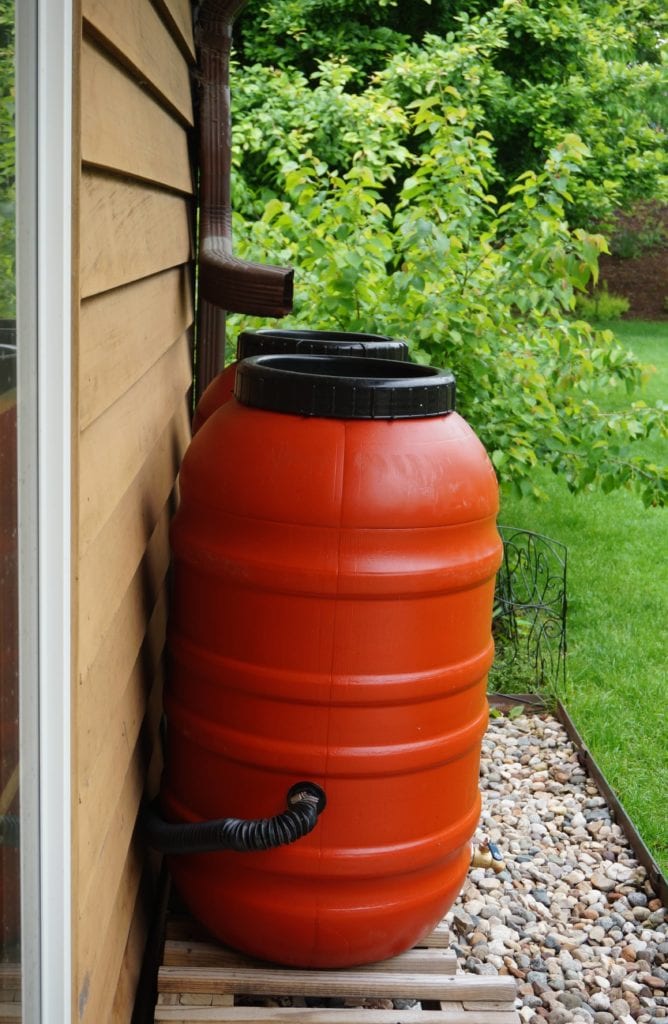
5. Rain Barrel
A rain barrel is usually installed under a downspout to collect the water until you get rid of it. Some people will use the water to wet their lawn, and this will allow them to save money on their water bill. In the hot months, a rainwater diverter is essential to keep the mosquitoes out.
6. Sump Pump (outside of the State of Florida)
Watch where the water sits after storms. In homes that have a basement, a sump pump is a great idea. Not sure what that is?
It is usually found in the basement of a home and is a pump that removes water that has collected in a water collecting basin. If you already have one, make sure it runs far enough away from the house so the water is not flooding the yard.
Results if the Drainage Issue is Not Fixed
If the drainage issue is not taken care of:
- Water intrusion in the home then leads to mold in the home and on the carpet .
- Foundation and structural damage including a possible sinkhole may develop.
- Mold in the basement can form (in houses that have a basement or crawlspace)
- Mosquitoes will find the pooling water, lay eggs, and then you will have another issue on your hands.
- Plants and grasses will drown as they won’t be able to get the oxygen they need to survive.
- Concrete will start to grow mold as the concrete becomes porous and will have the oxygen for mold growth.
When you were looking at the water issue, did you notice a crack in the stucco? A homeowner can fix a smaller crack and can get Quikkrete or a small repair kit at the local hardware store and patch it up.
However, larger than 1/8 inch can be more difficult. How do you know if it is bigger than 1/8 inch? A great trick is to take an old credit card and see if it fits in the crack. If it does, then it is a large crack.
The larger crack will allow moisture intrusion from the water outside. This will lead to a plethora of issues such as mold.
Maintenance Landscaping to Keep Water Away From House
Summer is a great time for maintenance on a home. Areas that are important to take care of outside :

HVAC Unit
Check around the HVAC for weeds or plants growing into the outside unit. This can also cause an issue with drainage in the yard and you don’t want that to happen. If you are hearing any odd noises or the fan isn’t moving you may need to contact a professional.
Garden
Take out the overgrowth and freshen up the flowers that can withstand the heat. Make sure you are watering in the early hours so the water can do its trick to keep the plants alive. Again, paying attention that the landscaping doesn’t cause issues in the yard is essential.
When To Call a Professional
If you need help with the grading of the yard or not sure what is causing the water to divert towards the home, contact a professional. Not to mention, there are people who are very knowledgeable about how to keep water from intruding.
Keep in mind that the yard is one place you want to keep looking nice and a professional can help you do that.
Conclusion
Finally, it can be difficult to know what landscaping can be done to keep water away from the house. Go to the local hardware store and ask for ideas for native plants. You can also leave us a reply if you have questions about negative grading or water intrusion. We are here to help!



